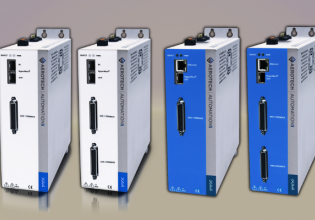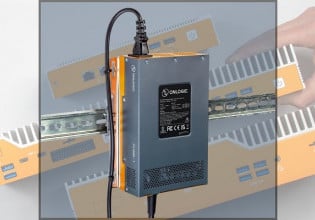This is Nuts! Caterpillar and Flory Industries Debut Electrical Harvesting
A partnership between Flory Industries, along with Caterpillar and CA’s Holt Cat dealer, has led to the launch of a new Li-ion battery-driven electric powertrain for nut harvesting.
As an engineer who grew up on a farm, I find automated agricultural equipment to be some of the most fascinating applications of electrical technology. Balancing heavy-duty power demands with the often remote and harsh locations provides a critical proving ground for modern electrification technology.
This proof of electrification advancement was illustrated in a recent partnership between powertrain equipment manufacturer Caterpillar and US-based manufacturer Flory Industries, along with Cat dealer Holt of California.
Field Testing is Going Totally Nuts
The equipment produced by Holt Industries is an elevator, a towable device that lifts the product from the harvester to the storage truck. The model is in the final prototyping stage, with further field testing scheduled to be ready in the second quarter of 2024 when crops are ready to actually make real-world use of the device.

The prototype nut harvesting elevator from Flory Industries, in partnership with Caterpillar and Holt of CA. Image used courtesy of Cat
Upon successful completion and optimization of the prototype, shipping and final implementation by customers is projected by the harvest season of 2026. With rapid advancements in ag technology, consumers like you and me can be hoping and praline for more effective and efficient solutions to bring food from the farms to our tables.
Walnut Just Use Diesel?
Global progression toward reduced tailpipe emissions is certainly a well-understood target these days, but there are a few reasons that electrification can be particularly appealing in agriculture.
When working with food products, chemicals can lead to contamination and health hazards. Both the fumes from emissions and possible spills of liquid fuels can present such hazards to people and crops, and moving to electrical powertrains removes the fuels from the field.
Secondly, electrical control systems can monitor battery performance for system health in ways that are very difficult for internal combustion sources. Closely monitoring temp, voltage level, and balancing of cells in the battery unit can identify and predict decreases in performance. In contrast, a diesel engine may not show symptoms of failure until a more catastrohic end of life. This is unacceptable for the demands of a peak harvest season in agricultural settings.
A Quick Pecan Under the Hood
Traditionally, these harvesting elevators of this size use large diesel generators to produce the electricity needed for conveyor motion. The lithium-ion solution in this new prototype will replace a 74 HP generator that previously provided equivalent output power for the large motors.

Produced by Caterpillar, the modular Li-ion battery produces 600 volts. Image used courtesy of Cat
The battery pack from Caterpillar features a modular design and a 600-volt operating output. Obviously, as with all electrification projects, hurdles include the charge time, the full-output run time, and the convenience of charging or replacing the battery pack.
Agriculture applications, in particular, are less suited for regular and rapid recharging, as they must spend time in remote locations, and the harvesting season demands long working hours and ultra-high reliability, while the remainder of the year must remain in serviceable condition if unused.
So the next time we cashew indulging in some snacks from your local supermarket, consider the tech and innovations, like the electrification of nut harvesting from Flory, Caterpillar, and Holt, all taking steps to feed the world!






